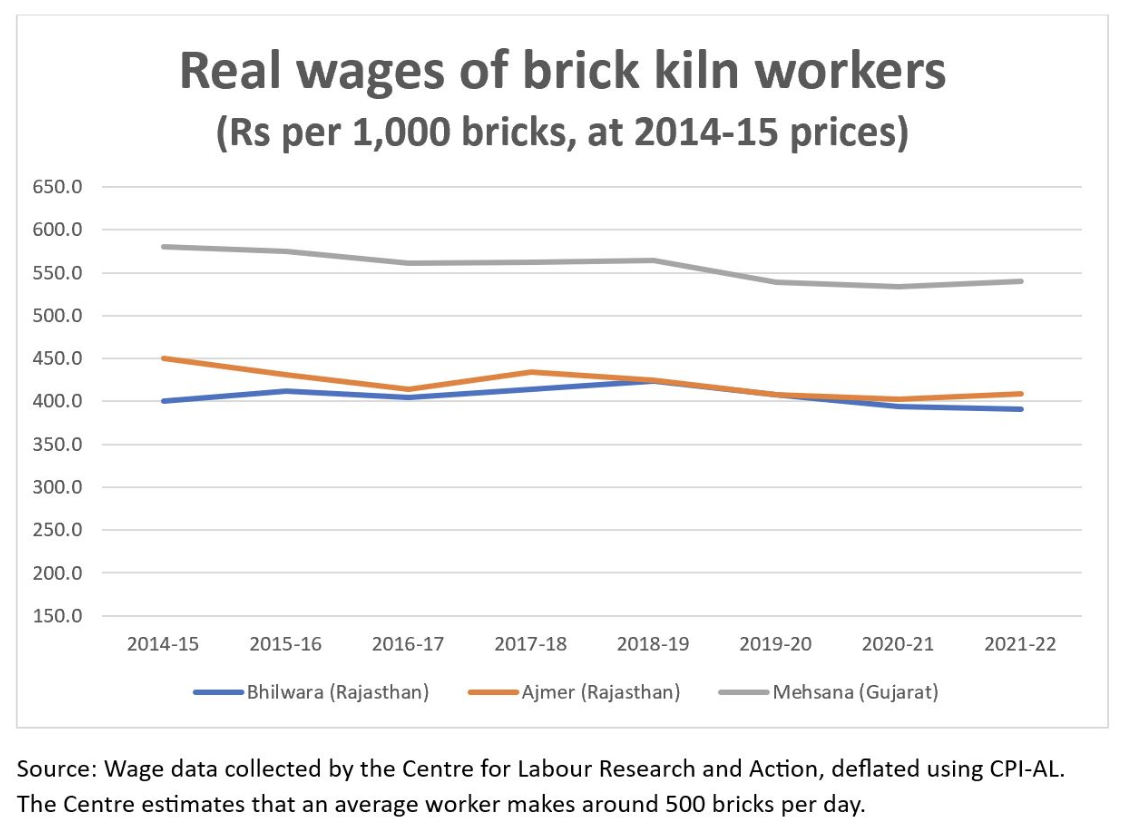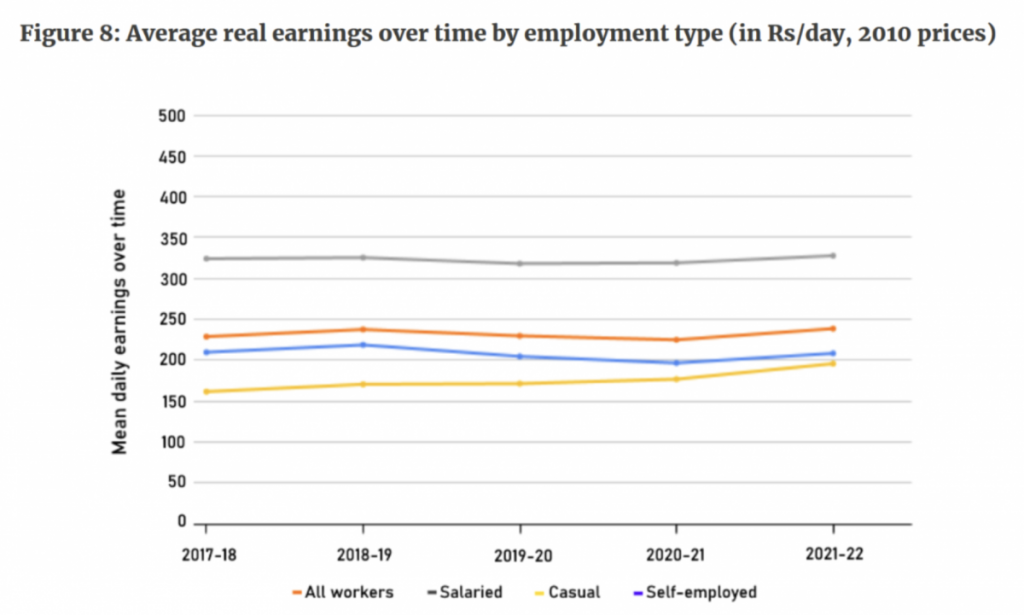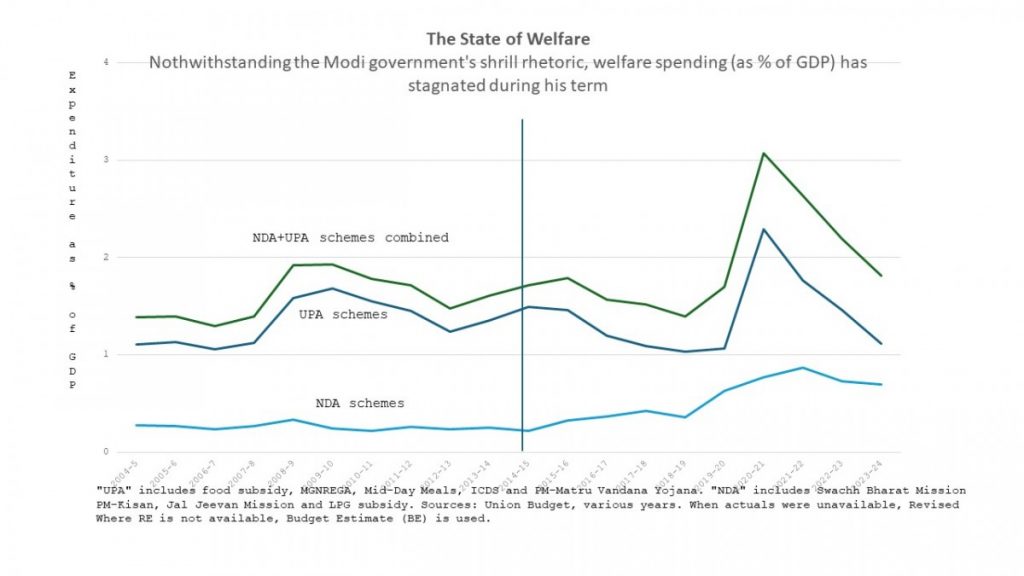‘Growth in Real Wages Virtually Zero Under Modi Government’: Data
Ahead of the Lok Sabha election, the crisis of unemployment unites India as few things do. Why are important sections of India out of work? How do unemployed Indians live? Why is the work available not enough to earn a livelihood? How do Indians secure employment? How long is the wait? With India out of work, The Wire's series explores one of the most important poll issues of our time.
New Delhi: Stagnating real wages, a decaying social security system and lack of concern for informal workers mark the Modi government’s 10-year tenure according to data collated by economists Jean Drèze and Reetika Khera.
While presenting their findings last week at a press conference organised by Loktantra Bachao 2024, the economists said that “real wages in the country had barely risen since 2014” across agricultural, non-agricultural and construction sectors.
From 2014-2024, real wages (wages that have been adjusted for inflation) for agricultural labourers declined by 1.3% every year according to data from the Ministry of Agriculture. This is in stark contrast to the increase of real wages by 6.8% each year under the Manmohan Singh-led government from 2004-2014.
“Real wages were growing very fast in the 10 years before Modiji came to power. It was nearly 5-6% a year, which is quite remarkable. It was the fastest growth of real wages in post-Independence India and now it is virtually zero,” Drèze said.

Photo:X/@JharkhandJanad1
The stagnation and decline in wages is not restricted to agricultural labour. Brick kiln workers across Rajasthan and Gujarat too haven’t seen any real growth in their wages, hounded by inflation and lack of other employment opportunities. Brick kilns are seen as labour intensive and a last resort to gain employment for India’s poorest.

Photo: By arrangement
According to PLFS data (2017-22) quoted by the economists, real wages have been stagnant for the salaried class and the self-employed as well.

Photo: By arrangement
Welfare spending and social security
Khera and Drèze said that the carefully constructed reputation of the Modi government as a big welfare spender doesn’t stand up to scrutiny.
In 2014, five flagship schemes were laying the foundation for a solid social security system in the country. These were: the public distribution system (PDS), the National Rural Employment Guarantee Act (NREGA), maternity benefits, social security pensions, child nutrition schemes under integrated child development services (ICDS) and the midday-meal programme.
“All five have been undermined in one way or another by the NDA,” the economists said. It must be noted that barring pensions, all other schemes are part of legal entitlements to Indian citizens, derived through legislation or court orders, and not a gesture of generosity by any government.

Child development services
The budget allocation for ICDS and midday meals declined by 40% in real terms in the last 10 years. While earlier there was a larger umbrella of services under ICDS, the NDA government in 2021 introduced two new terms – Saksham and Samarthya – to club different schemes.
The budget allocation for Anganwadi services in 2020 was Rs 20,532 crore. In 2021, the allocation for Saksham, which along with Anganwadi included the National Nutrition Mission, was Rs 20,105 crore. This meant a loss of Rs 400 crore for a programme which now clubbed three other schemes along with Anganwadi.

Photo: By arrangement
PDS
Nearly 10 crore people have been left out of PDS due to a lack of updated figures and the Modi government’s failure to conduct the 2021 census.

Illustration: Pariplab Chakraborty. Photo: Intifada P. Basheer and Azam Abbas
“It is unfortunate that we are still stuck on the 80 crore figure from the last census because the 2021 census was never conducted – a first in Indian history. According to our laws, the National Food Security Act, 50% from urban and 75% population from rural areas must be covered under PDS. This is how the government arrived at the 80 crore figure back then. If the census were to be conducted today, nearly 10 crore people would get added as beneficiaries of PDS,” Khera said.
Apart from this, “maternity benefits have been illegally restricted to one child per family; the central contribution to social security pensions under National Social Assistance Programme (NSAP) has stagnated at a measly Rs 200 per month; NREGA wages have stagnated in real terms and are rarely paid on time,” the two pointed out.
Renaming of schemes and exaggerated results
Khera and Drèze said that while the NDA government has, to some extent, compensated for this decline by taking up schemes with focus on building toilets, improving LPG access and housing, their success is much smaller than that what the government claims.
For instance, the NDA government declared India “open defecation free” in 2019, but NFHS-5 data for 2019-21 reveal that about 20% of all households had no toilet facility.
The Modi government is also guilty of renaming schemes launched by the UPA government and glorifying them with PR and marketing campaigns.
- PM Awas Yojayana was Indira Awas Yojana
- Swachh Bharat Mission came from the Nirmal Bharat Mission
- ICDS and Midday meal were clubbed under PM POSHAN
- Rajiv Gandhi Drinking Water scheme became Jal Jeevan Mission and,
- PDS was rechristened as Pradhan Mantri Garib Kalyan Yojana
The Wire is now on WhatsApp. Follow our channel for sharp analysis and opinions on the latest developments.




